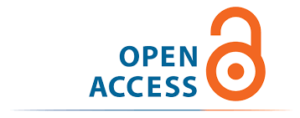ORIGINAL ARTICLE
Anti-fungal Consumption by Days of Therapy (DOT) Metric in a Teaching Hospital: A Step towards Anti-fungal Stewardship
JASPI December 2024/ Volume 2/Issue 4
Copyright: © Author(s). This is an open-access article distributed under the terms of the Creative Commons Attribution License, which permits unrestricted use, distribution, and reproduction in any medium, provided the original author and source are credited.
Patel R, Chauhan B, Modi C, Patel N.Anti-fungal Consumption by Days of Therapy (DOT) Metric in a Teaching Hospital: A Step towards Anti-fungal Stewardship. JASPI. 2024;2(4):17-24 DOI: 10.62541/jaspi050
ABSTRACT
Background: Anti-fungal stewardship (AFS) remains an under-explored aspect within antimicrobial stewardship programs, particularly in developing nations. Understanding the trend of anti-fungal agent consumption at our institute will assist with implementing an anti-fungal stewardship program (AFSP) soon. This study was carried out to provide benchmarking data on anti-fungal consumption, compare the consumption of anti-fungal agents among various hospital locations, and identify target locations for AFS.
Methods: After the approval of the Institutional Ethics Committee (IEC), a retrospective observational study was conducted at Shree Krishna Hospital, Karamsad. Antifungal consumption was calculated using the Days of Therapy (DOT) metric in adult inpatients in whom systemic antifungal agents (amphotericin B, anidulafungin, caspofungin, fluconazole, flucytosine, and voriconazole) were administered from 2020 to 2022. Data of DOT were captured through the Hospital Information System (HIS) and analysed using Microsoft Excel for Mac version 16.75 (23070901).
Results: Over three years, one patient was prescribed anti-fungal agents per 1000 admissions. Overall anti-fungal consumption in the last three years was 2.96 DOT/1000 Patient Days (PD). The consumption has increased over three years from 2.63 DOT/1000 PD in 2020 to 3.81 DOT/1000 PD in 2022. Fluconazole (2.48 DOT/1000 PD) was the most common anti-fungal agent consumed. The highest anti-fungal use was observed in critical care units (7.48 DOT/1000 PD).
Conclusion: Our study showed increased consumption of antifungal agents over three years. A prospective study is recommended to assess the rationality of antifungal agent prescriptions in locations with high consumption.
Submit a Manuscript:
Copyright © Author(s) 2024. JASPI- Journal of Antimicrobial Stewardship Practices and Infectious Diseases.

